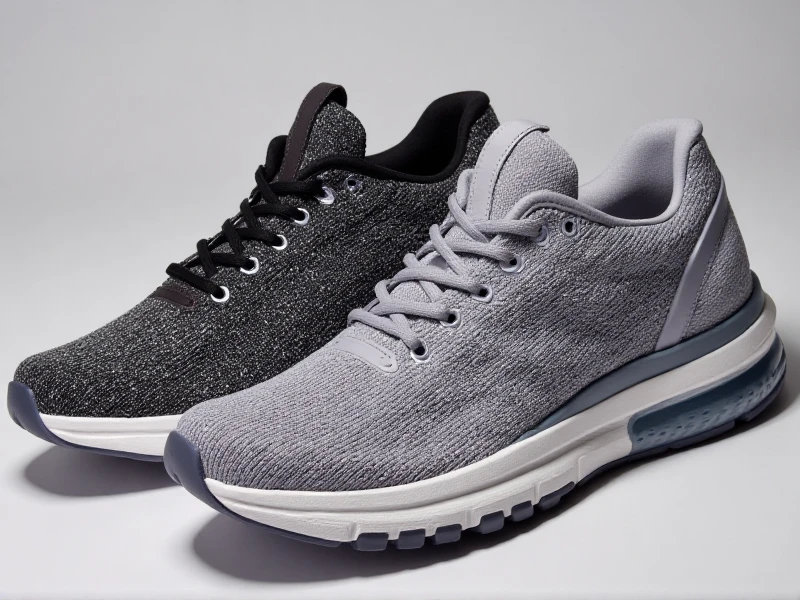Your Path to Peak Performance: Choosing the Perfect Women's Running Shoes
2025-06-06

Every stride is a statement of strength. Every mile conquered builds resilience. Running offers incredible benefits – stress relief, cardiovascular fitness, and a profound sense of accomplishment. But to truly unlock your potential and enjoy the journey injury-free, one crucial element stands between you and your goals: the right pair of women's running shoes. This isn't just about aesthetics; it's about engineering designed specifically for the female form, providing the foundation for comfort, performance, and long-lasting enjoyment of the sport.
Why Your Running Shoes Matter So Much
Think of your women's running shoes as your most trusted training partner. They are your essential interface with the ground, absorbing impact, providing stability, and propelling you forward. Ill-fitting or unsupportive shoes can quickly derail your progress, leading to:
Blister City: Friction isn't your friend. Poor fit guarantees painful hotspots.
Ache & Pain: From nagging shin splints and plantar fasciitis to knee or hip discomfort, the wrong shoes place undue stress on muscles, tendons, and joints.
Subpar Performance: Shoes that are too heavy, lack responsiveness, or don't match your gait can sap energy and slow you down.
Shortened Running Life: Discomfort and injuries are the top reasons new runners quit. Great shoes help keep you on the road or trail.
Decoding Your Needs: It's Not One-Size-Fits-All
Choosing the ideal women's running shoes requires looking beyond just size and color. Here’s what matters most:
1. Your Foot Type & Gait Analysis: This is paramount. Are you a neutral runner? Do you overpronate (your foot rolls inward excessively)? Or perhaps supinate (your foot rolls outward)? Understanding your natural motion dictates the type of support or stability you need. Visit a specialty running store for a professional gait analysis – it’s an invaluable investment.
2. Level of Cushioning: How much shock absorption do you prefer? This ranges from minimalist shoes offering ground feel to maximally cushioned options providing plush landings. Consider the distances you typically run and personal comfort preference. "Cloud-like comfort" isn't just marketing for many seeking women's athletic footwear.
3. The Right Support/Stability: Based on your gait:
Neutral Runners: Opt for shoes with balanced cushioning without specific stability features.
Overpronators: Look for women's running shoes with structured stability or moderate motion control features (often denser material on the inner arch) to guide your foot into a more neutral position.
Supinators: Generally need well-cushioned, flexible neutral shoes that encourage natural motion absorption on the outside of the foot.
4. Perfect Fit & Comfort:
Sizing: Typically requires roomier than regular shoes. Have at least a thumb's width (about 1/2 inch) between your longest toe (often the second toe) and the end of the shoe. Width options (like Narrow (B), Standard (D), Wide (2E)) are crucial.
Heel Lock: Your heel should be snug without slipping – pinching or lifting causes blisters.
Midfoot Security: Your foot should feel held securely through the arch without tightness.
Toe Splay: Your toes need space to spread naturally upon landing. Female running trainers increasingly feature anatomical toe boxes.
The Bend Test: The shoe should flex easily at the ball of your foot, where your foot naturally bends. Stiff soles hinder movement.
5. Weight Matters: Lighter shoes generally enhance speed and responsiveness, often favored for racing or tempo runs. Slightly heavier shoes offer more cushioning and durability for long, easy miles. Many options strike a versatile balance.
6. Where Will You Run? Terrain Defines Choice:
Road Running: Prioritize cushioning, lighter weight, and responsiveness. Flexible soles grip pavement well. This covers the vast majority of women's running sneakers.
Trail Running: Requires durable women's trail running shoes with aggressive lugs for grip, protective rock plates underfoot, and a sturdier build to tackle uneven terrain and debris.
Hybrid: Some shoes offer moderate lug patterns suitable for smooth trails and pavement.
7. Style & Breathability: Yes, feeling good matters too! Modern women's running shoes come in a dazzling array of colors and designs. Don't underestimate the motivational boost of loving how they look. Breathable mesh uppers are essential for comfort and preventing overheating on runs. Look for reflective elements for safety during low-light runs.
Finding Your Sole Mate: The Process
1. Know Thyself: Analyze your typical routine (distance, terrain, goals) and any known foot issues or gait patterns.
2. Get Expert Help: Visit a specialty running store. Bring your old workout shoes – wear patterns tell a story. Get your feet measured (length AND width). Get that gait analysis!
3. Try, Try, Try: Never rely solely on reviews or past models. Technology and your feet change. Try on multiple pairs from different brands and categories (neutral, stability, max cushion). Run or jog in them around the store.
4. Listen to Your Feet & Body: Comfort is non-negotiable! No rubbing, pinching, or pressure points. Even subtle discomfort magnifies over miles. Ensure you feel stable and supported through your stride.
5. Consider the Sock Factor: Bring or wear the type of running socks you normally use.
Investing in Your Running Journey
Choosing the right women's running shoes is an investment in your health, performance, and sheer enjoyment of running. Don't compromise. Take the time to find the pair that feels like a natural extension of your body – offering support where needed, freedom where expected, and the perfect blend of cushioning and response. When you lace up a pair perfectly suited to you, every run feels a little bit easier, a little bit longer, and whole lot more joyful. Your feet (and your running goals) will thank you.
Remember, your perfect pair is out there, ready to carry you toward your next personal best. Happy running!
Category: